 July 1, 2010 John E. Ross, KD8IDJ, Editor
| |||||||||||
+ Available on ARRL Audio News + Public Service: WX4NHC, VoIP Weather Net and Hurricane Watch Net Activated for Hurricane Alex
As Tropical Storm Alex turned into Category 1 Hurricane Alex, three Amateur Radio mainstays during the Atlantic hurricane season -- WX4NHC, VoIP Hurricane Net and Hurricane Watch Net -- activated at 8 AM EDT on Wednesday, June 30; WX4NHC is the Amateur Radio station at the National Hurricane Center in Miami, Florida. Alex made landfall at Soto la Marina, Mexico late Wednesday, but weakened Thursday as it moved across Mexico and was downgraded to a tropical storm, dumping heavy rain over Mexico and south Texas; the storm's center made landfall with 96 MPH winds in San Fernando in the Mexican state of Tamaulipas, 75 miles south of the Texas border. According to the NHC at 11 AM EDT Thursday, Alex was centered about 165 miles west-southwest of La Pesca, Mexico, and about 150 miles east of Zacatecas and was moving west at 12 MPH; it is expected to stay on that trajectory for the next day or so. Read more here. + Amateur Radio in the Classroom: ARRL Teachers Institutes Wrap Up in New Mexico, South Carolina and California
After the first ARRL Teachers Institute on Wireless Technology (TI) of 2010 concluded this past February in Tucson, Arizona, three more TIs happened in quick succession -- New Mexico, South Carolina and California -- in May and June. The Teachers Institute on Wireless Technology is a four-day, expenses paid in-residence learning opportunity designed for motivated teachers and other school staff who want to learn more about wireless technology and bring that knowledge to their students. A variety of topics are covered during the TI, including basic wireless technology literacy, electronics, the science of radio, radio astronomy, how to bring space into the classroom ham radio operation, introduction to microcontrollers and basic robotics. Participants do not need to have an Amateur Radio license to attend a TI session. The Teachers Institute program is one component of the grant offerings within the ARRL's Education and Technology Program portfolio of resources made available to schools and school teachers to advance the integration of wireless technology literacy and ham radio into school curricula. Read more here. + ARRL Field Day: It's a Wrap!
With more than 500 Field Day logs already received -- and more coming in every day -- it's safe to say that this year's ARRL Field Day was a smashing success! Conditions, at least on the East Coast, were quite good. Operators at W1AW, the Hiram Percy Maxim Memorial Station, worked almost 3000 stations during Field Day, including a few California stations on 6 and 10 meters, as well as North Dakota on 10 meters on Saturday. Don't forget to send in your Field Day logs. Logs for 2010 ARRL Field Day must be postmarked, e-mailed to the ARRL, posted to the Field Day Web Submission Applet site or submitted by 2059 UTC Tuesday, July 27, 2010. Late entries cannot be accepted. You can also post your Field Day stories and photos on the Field Day Soapbox. The 2011 ARRL Field Day will be June 25-26. ARRL in Action : What Have We Been Up to Lately?
This feature -- including convenient Web links to useful information -- is a concise monthly update of some of the things ARRL is doing on behalf of its members, including advocating for Amateur Radio operators at the national and international level, instructing classroom teachers on wireless technology, activating W1AW for ARRL Field Day and more. This installment covers the month of June. Read more here. + The Doctor Is IN: D-STAR, Antennas and Amplifiers Tom Copley, K4YAZ, finds that he needs to use more power to consistently reach my local D-STAR repeaters in the Tampa Bay area. I live in a condo and my VHF/UHF antenna is on a second floor porch. Moving it higher or into the clear is out of the question, due to my condo association. I am using a dual band transceiver with 50 W output on high power. This is not enough to consistently reach the local repeaters. Since I am mainly using the 70 cm band, I have purchased an amplifier that has an output of 100 W with 30 W drive on 70 cm. The amplifier also has a useful receive preamp. To obtain the full 100 W output from the linear, one must input 30 W. My 50 W radio would be over the input rating of my linear, and the approximately 15 W output from the radio on medium power will not drive the linear to the full 100 W output. Is there an easy solution to this issue, or do I have to get a different amplifier? Here's what the Doctor had to say: If you are right on the edge of the coverage area, the 3 dB increase in power may make the difference. Also consider any other losses, such as in the coax run to your antenna -- at 70 cm, coax loss can be a big factor, and if the length is more than a few feet, better coax may reduce loss by almost as much as the amplifier gain -- get every decibel you can.
Your amplifier drive problem turns out to have an incredibly simple solution. If you have 2.2 dB loss between the radio and the amplifier, your 50 W radio output will be just 30 W at the amplifier. This only makes sense because of the preamp in the amplifier; otherwise, the loss would also reduce receiver sensitivity. With a preamp that has a reasonable gain, the noise figure and thus signal to noise ratio is determined largely by the noise figure of the preamp. On HF, making a reasonably accurate attenuator using power resistors can be easy. At UHF, component, lead and wiring inductance can make it a very difficult job -- but all is not lost! Now for the really simple part. You need coax cable between the radio and amplifier anyway (see Figure 1). If you use coax with a loss of 2.2 dB, you're done. On 440 MHz, it takes just 16 feet of Belden 8259 RG-58 coax to get the loss -- hopefully emphasizing my earlier point! If you select a different cable, make sure you have the cable attenuation specs available. The extra coax can be neatly coiled out of the way, or better yet, move the amplifier closer to the antenna to reduce the coax length and attenuation between the amplifier ad antenna. Note that this all assumes that the amplifier input is a good match to 50 ohms; if not, the coax loss will be higher. If you have a wattmeter, it will be a good idea to confirm all the power levels when you're done -- and life being what it is -- plan to do a little trimming. Thanks Doctor! Do you have a question or a problem? Send your questions via e-mail or to "The Doctor," ARRL, 225 Main St, Newington, CT 06111 (no phone calls, please). Look for "The Doctor Is IN" every month in QST , the official journal of the ARRL. + International Spotlight: ARRL Represented at Europe's Largest Amateur Radio Convention
Billed as Europe's biggest Amateur Radio exhibition, HAM RADIO 2010 was held in Friedrichshafen, Germany, June 25-27, 2010. The event is held annually in the Lake Constance region. Each year, a contingent from the ARRL has attended HAM RADIO in Friedrichshafen, greeting our non-US members and networking with other national radio societies. ARRL also supports DXCC card checking at its booth -- a very popular activity among the international community who travels to this large show. The ARRL, as International Secretariat for the International Amateur Radio Union, also hosted a meeting area for IARU officials and friends at the convention. Last year's HAM RADIO had 17,400 visitors and nearly 200 exhibitors from 30 nations. Pictures from this year's event have been posted to ARRL's Facebook page. Read more here. Amateur Radio in Space: IARU International Amateur Radio Satellite Forum Scheduled in Conjunction with AMSAT-UK Meeting
The IARU International Amateur Radio Satellite Forum will be held in conjunction with the AMSAT-UK Colloquium in Guildford, England on the weekend of July 31-August 1. The forum -- chaired by IARU Amateur Satellite Advisor Hans van de Groenendaal, ZS6AKV -- will take place on Sunday morning, August 1. A report back on the activities of the IARU Satellite Adviser and his Advisory Panel will be one of many items on the meeting's agenda. There will also be a brief presentation covering the ITU notification requirements for satellites operating in the Amateur Service and the requirement to disable transmissions should the signals interfere with other users of the radio spectrum. The forum is open to all delegates at the Colloquium. For more information, including hotel and registration information, please see the AMSAT-UK Web site. + Solar Update
Tad "Like a vast river, stretching in the Sun" Cook, K7RA, reports: The conditions were not great for ARRL Field Day last weekend, but some nice sporadic-E openings on 6 and 10 meters livened things up. Geomagnetic conditions were quite active over the past week, which increased absorption, with the higher latitudes more affected than mid-latitudes. The average daily sunspot numbers over the past three weeks were 26.9, 16.1 and 11.7, so quiet conditions continue with very little solar activity. Look for more information on the ARRL Web site on Friday, July 2. For more information concerning radio propagation, visit the ARRL Technical Information Service Propagation page. This week's "Tad Cookism" brought to you by William Wordsworth's Growth of a Poet's Mind: Book Fourth, Summer Vacation. + ARRL to Close in Observance of Fourth of July ARRL Headquarters will be closed in observance of Independence Day on Monday, July 5. There will be no W1AW bulletin or code practice transmissions that day. League Headquarters will reopen Tuesday, July 6 at 8 AM Eastern Daylight Time. We wish everyone a safe and festive holiday weekend. This Week on the Radio
This week, there is another running of the NCCC Sprint Ladder on July 2. The DL-DX RTTY Contest and the Venezuelan Independence Day Contest are July 3-4. The Michigan QRP July 4th CW Sprint is July 4-5. Next week, the FISTS Summer Sprint is July 10 and the IARU HF World Championship is July 10-11. All dates, unless otherwise stated, are UTC. See the ARRL Contest Branch page, the ARRL Contest Update and the WA7BNM Contest Calendar for more info. Looking for a Special Event station? Be sure to check out the ARRL Special Event Station Web page. ARRL Continuing Education Course Registration
Registration remains open through Sunday, July 25, 2010, for this online course session beginning on Friday, August 6, 2010: Amateur Radio Emergency Communications Level 1. To learn more, visit the CEP Course Listing page or contact the Continuing Education Program Coordinator. | |||||||||||
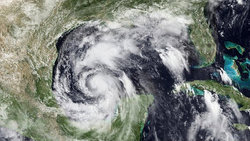
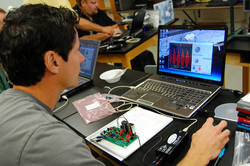
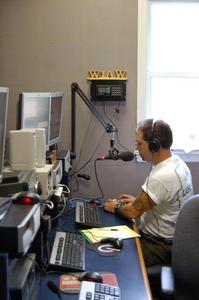
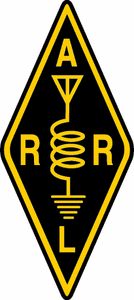
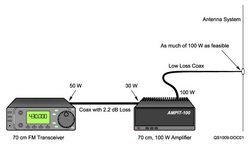
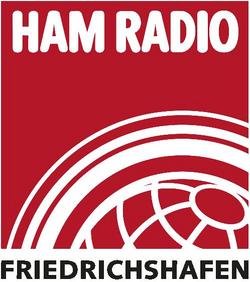
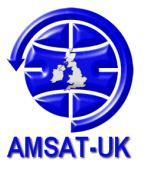
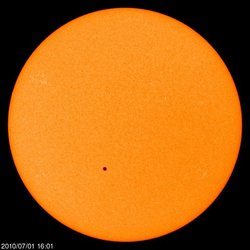
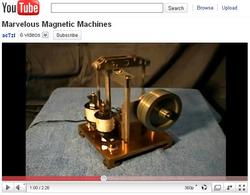 ARRL member Pete Friedrichs, AC7ZL, is a published author who is presently working on a new book titles Marvelous Magnetic Machines. Pete is a dedicated homebrewer who takes radio to its roots -- even building his own vacuum tubes. In this video, he features homebrew electric motor projects from his new book. According to Pete, they were built from household scrap and garage sale pickings. Even the music behind the video is homebrew -- it's an original instrumental performed by a three-piece band Pete belonged to back in the 1980s. Click
ARRL member Pete Friedrichs, AC7ZL, is a published author who is presently working on a new book titles Marvelous Magnetic Machines. Pete is a dedicated homebrewer who takes radio to its roots -- even building his own vacuum tubes. In this video, he features homebrew electric motor projects from his new book. According to Pete, they were built from household scrap and garage sale pickings. Even the music behind the video is homebrew -- it's an original instrumental performed by a three-piece band Pete belonged to back in the 1980s. Click 








